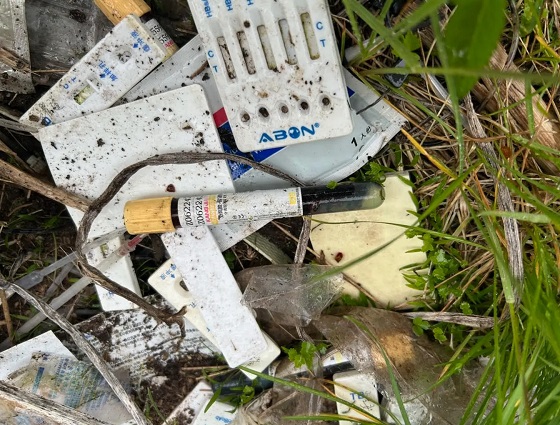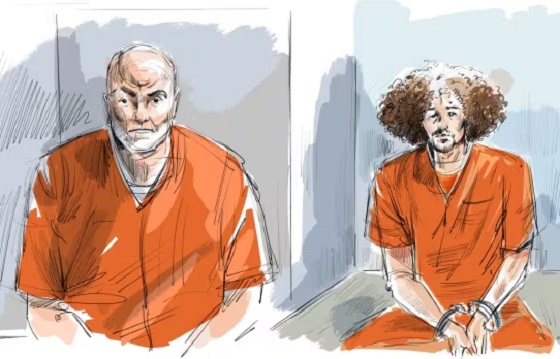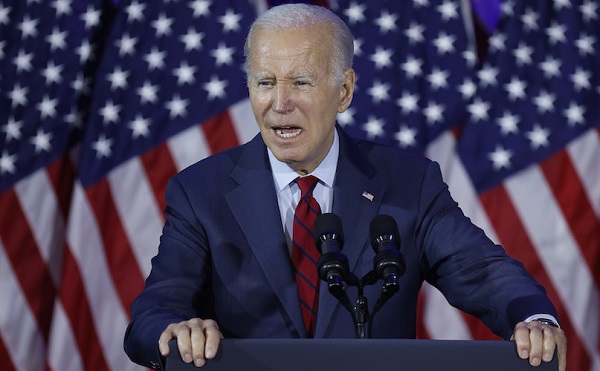Immigration
Unregulated medical procedures? Prince Edward Islanders Want Answers After Finding Biomedical Waste From PRC-Linked Monasteries

This confirmed image of medical waste and Chinese-labelled testing equipment was obtained by The Bureau from a group of PEI residents concerned about activities on monastery land.
By Garry Clement
Former RCMP Investigator Investigates Suspicious Medical Dumping Linked to Controversial PEI Sites
When Islanders recently learned that syringes, catheters, bloody blankets, and even bottles of blood had been dumped on remote property owned by a Buddhist organization in this eastern Canadian province, the reaction was one of stunned disbelief. Even more unsettling than the discovery itself was the response: a vague apology from the monks and nuns, who promised to “clean it up immediately,” but offered no explanation as to how such biomedical waste — the kind that raises serious questions about unregulated medical procedures — ended up there in the first place.
This is not an isolated incident. It is the latest manifestation of a pattern that has become all too familiar to Prince Edward Island residents: the secretive, evasive behavior of foreign-funded groups whose presence in our communities is growing rapidly and largely unchecked. It’s a story of whispers and quiet land acquisitions, of parallel systems and opaque intentions — all taking place in a manner that increasingly appears to dovetail with the strategic aims of the Chinese Communist Party.
The Buddhist group in question, Bliss and Wisdom, first arrived on the Island 17 years ago. At the time, there was no mention — publicly or privately — of plans to relocate thousands of Taiwanese and, increasingly, PRC nationals to build what is now beginning to resemble a self-contained enclave. And yet today, their footprint spans schools, a university, sprawling agricultural operations, and now — we must ask — possibly an unregulated health system?
The medical waste discovered raises deeply troubling questions. Were medical procedures being conducted on site? If so, by whom, for whom, and under what legal and hygienic standards? What explains the presence of pediatric materials reportedly found nearby — evidence suggesting the presence of children? Was the waste connected to the reported tuberculosis outbreak among monks? And most of all — why were Islanders not told?

Images captured by PEI residents concerned with secretive activities on monastery land.
This isn’t just a story of negligence. It’s a story of willful opacity. It’s about a network that operates apart from rather than within the community, shielding its actions from scrutiny and counting on public deference — or disinterest — to continue unchecked.
This is no longer simply a local zoning or sanitation issue. The implications of a foreign-backed group establishing an insulated, secretive infrastructure within Canada — complete with its own education, food production, real estate development, and potentially health services — must be examined within a broader geopolitical context.
We know that the Chinese Communist Party utilizes religious institutions, diaspora communities, and cultural outreach organizations as tools in its United Front strategy — a global influence campaign designed to co-opt foreign systems and suppress dissent abroad. While not every individual involved may be complicit or even aware of this broader strategy, the structural design of these communities often mimics tactics documented in Australia, New Zealand, and parts of Europe.
The fact that this group, flush with offshore money, operates without transparency while acquiring vast tracts of rural Canadian land should deeply concern citizens and policymakers alike.
It’s time to ask some uncomfortable questions: Why have our local and provincial leaders remained largely silent? Why are there no public inquiries into the legality of private medical practices, the source of biomedical waste, or the tax status of such institutions? And why has the community — despite mounting evidence — allowed itself to be sidelined?

There is growing unease among Islanders that we are witnessing the slow erasure of our own sovereignty, not through tanks or hackers, but through land deals, cultural silos, and behind-the-scenes influence. If left unchecked, the “newcomers” won’t just be part of the wider society — they will become the wider society, on their terms.
The time for polite silence is over. Islanders deserve answers — not just about the blood, the syringes, and the waste — but about the broader ambitions of those behind it. Transparency must replace secrecy. Accountability must replace deference. And national security must no longer be a taboo topic when foreign-funded enclaves begin to rival local institutions in scale and ambition.
Our sovereignty — both civic and national — depends on it.
Former senior RCMP officer Garry Clement is author with Dean Baxendale and Michel Juneau Katsuya of the forthcoming book Canada Under Siege. He consults with corporations on anti-money laundering, contributed to the Canadian academic text Dirty Money, and wrote Undercover, In the Shady World of Organized Crime and the RCMP
The Bureau is a reader-supported publication.
To receive new posts and support my work, consider becoming a free or paid subscriber.
Invite your friends and earn rewards
Fraser Institute
Before Trudeau average annual immigration was 617,800. Under Trudeau number skyrocketted to 1.4 million annually

From the Fraser Institute
By Jock Finlayson and Steven Globerman
From 2000 to 2015, annual immigration averaged 617,800 immigrants, compared to a more than doubling to 1.4 million annually from 2016 to
2024 (excluding 2020), according to a new study published by the Fraser Institute, an independent non-partisan Canadian think-tank.
“Over the past decade, Canada’s immigration numbers have skyrocketed, most starkly since 2021,” said Jock Finlayson, senior fellow at the Fraser Institute and co-author of Canada’s Changing Immigration Patterns, 2000–2024.
The study finds from 2000 to 2015, immigration (including temporary foreign workers and international students) grew on average by 3.5 per cent per year. However, from 2016 to 2024 (excluding 2020) immigration grew annually at 21.3 per cent—more than six times the 2000-2015 pace.
The sharp rise in recent years reflects both planned increases in permanent immigrant inflows as well as unprecedented and largely unplanned growth in the numbers of temporary foreign workers, international students, and asylum seekers. For example, in 2024 alone, 485,600 permanent immigrants entered Canada, along with 518,200 international students and nearly one million (912,900) temporary foreign workers.
However, due to concerns about the impact of unprecedented in-migration on housing affordability, employment opportunities (or lack thereof), access to health care and other issues, late last year the federal government unveiled plans to substantially reduce immigration levels over the 2025-27 period, affecting permanent immigrants, international students, and other temporary visa holders.
The composition of immigration also changed dramatically during this period. From 2000 to 2015, the average share of total immigrants in the permanent category was 42.1 per cent while the non-permanent share (mainly international students and temporary workers) was 57.9 per cent. From 2016 to 2024 (excluding Covid 2020), permanent immigrants averaged 27.7 per cent of total in-migration versus 72.3 per cent for non-permanent.
“We’re in the midst of a housing crisis in Canada, and the unfortunate truth is we lack the necessary infrastructure to accommodate immigration at the 2022-24 rate,” said Steven Globerman, senior fellow at the Fraser Institute and study co-author.
“While the reductions announced late last year have been confirmed by the new government, the levels of immigration over the next two year will still be well above historic benchmarks.”
This study is the first in a series of papers from the authors on immigration.

Canada’s Changing Immigration Patterns, 2000—2024
- Immigration, after 2000 and especially after 2015, is characterized by substantial increases in the absolute number of immigrants admitted, as well the share admitted as temporary foreign workers and international students.
- For example, from 2000 to 2015, the total number of immigrants increased at a simple average annual rate of 4% compared to 15% from 2016 to 2024. As well, permanent admissions as a share of total admissions declined by .83 percentage points per year from 2000 to 2015 and by 1.1 percentage points per year from 2016 to 2024.
- These recent developments reflect changes in government policy. In particular, the International Mobility Program (IMP) of 2014 enabled Canadian employers to bring in greater numbers of temporary workers from abroad to fill lower-paying jobs.
- The Advisory Council on Economic Growth appointed by the Trudeau government in early 2016 recommended substantial increases in permanent immigration, as well as in the number of international students who would become eligible for permanent status after acquiring Canadian educational credentials. The Trudeau government enthusiastically embraced the recommendation.
- Recent immigrants to Canada seem better equipped to participate in the labour market than earlier cohorts. For example, over the period from 2011 to 2021, the percentage of established immigrants with a bachelor’s degree or higher increased, and the vast majority of admitted immigrants speak at least one of the official languages. Moreover, recent immigrants enjoy higher employment rates than did earlier cohorts.
- Nevertheless, public concern about the impact of increased immigration—primarily on the affordability of housing—has led the federal government to reduce planned levels of future immigration substantially.

Steven Globerman
Alberta
Alberta Next: Immigration

From Premier Danielle Smith and Alberta.ca/Next
Let’s talk about immigration.
The Alberta we know and love was built by newcomers from all over Canada and the world; however, immigration levels must also be sustainable…and the Liberal’s open border policies have destroyed that balance resulting in high inflation and increased unemployment.
The Alberta Next Panel is asking: should Alberta take control of our own immigration system to ensure a more sustainable number newcomers that will more strongly contribute to our economy.
It’s your voice and your province. Have your say at www.alberta.ca/next
-

 Energy2 days ago
Energy2 days agoActivists using the courts in attempt to hijack energy policy
-

 National2 days ago
National2 days agoCanada’s immigration office admits it failed to check suspected terrorists’ background
-

 Daily Caller2 days ago
Daily Caller2 days agoWhat Happened in Butler, PA?
-

 Crime1 day ago
Crime1 day agoDEA Busts Canadian Narco Whose Chinese Supplier Promised to Ship 100 Kilos of Fentanyl Precursors per Month From Vancouver to Los Angeles
-

 Business1 day ago
Business1 day agoCanada must address its birth tourism problem
-

 Alberta2 days ago
Alberta2 days agoAlberta ban on men in women’s sports doesn’t apply to athletes from other provinces
-

 Alberta1 day ago
Alberta1 day agoMedian workers in Alberta could receive 72% more under Alberta Pension Plan compared to Canada Pension Plan
-

 International1 day ago
International1 day agoBiden autopen scandal: Did unelected aides commit fraud during his final days in office?






